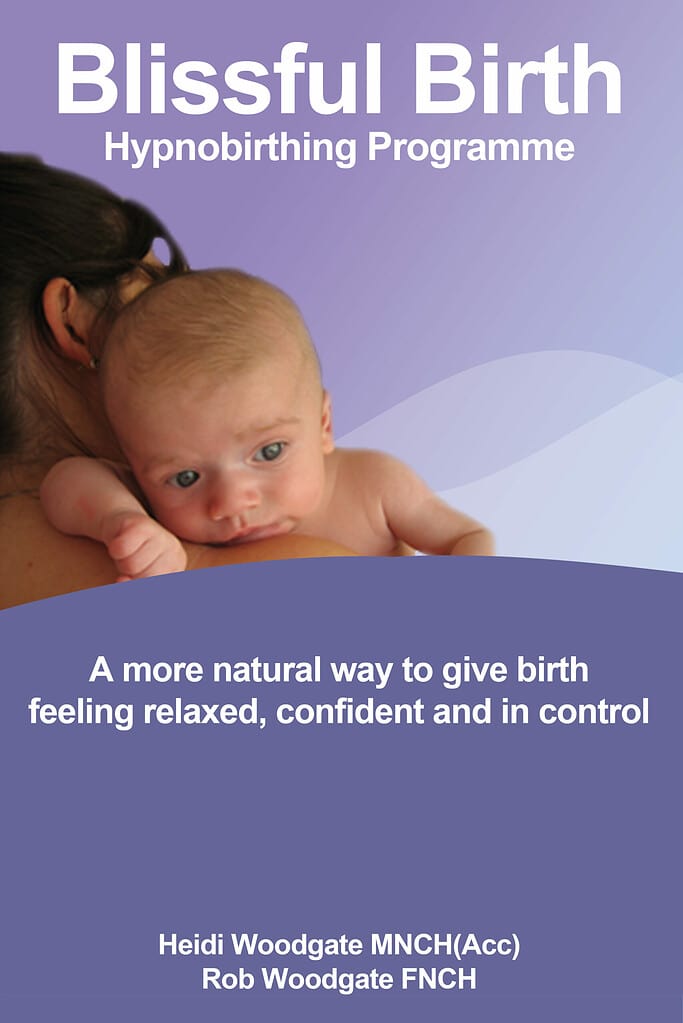Bringing a new life into the world is a remarkable experience, but it’s also no small feat. As an expectant mother, you’re likely anticipating the joy and excitement of holding your little one for the first time.
However, you may also be anxious about the pain and discomfort that often come with labor and delivery. It’s completely natural to feel this way – after all, the thought of hours of intense contractions can be daunting. While it’s true that childbirth can be challenging, there’s no need to fear the unknown.
Understanding your options for pain management during labor can help you feel more prepared and confident as you approach your due date.
In this article, we’ll explore various pain relief options available during labor and delivery, from medication-assisted approaches to natural techniques.
Table of Contents
Knowing your pain management options during labor and delivery

As an expectant mother, you want your childbirth experience to be as safe, positive, and memorable as possible. But the reality is, labor pain can be one of the most intense and challenging experiences you’ll ever face.
That’s why having proper pain management during labor and delivery is essential to ensure that you have a safe and positive experience for both you and your baby.
Afterall, uncontrolled pain can lead to increased stress and exhaustion, which can affect the labor progress and increase the likelihood of postpartum depression.
But don’t worry, there are various methods available to relieve pain. By exploring the different pain management options available and discussing them with your healthcare provider, you can make an informed decision that will help you focus on the joy of bringing your baby into the world.
How to ease labor pain

When it comes to managing pain during labor and delivery, there are several pain management methods available to expectant mothers. These range from pain medications to natural birth techniques.
Each pain medication has its own set of risks and benefits, and the best choice will depend on the individual’s preferences, medical history, and the course of labor. It’s important to have a discussion with your healthcare provider and birth team to weigh the benefits and risks of each option.
Remember: The best pain management plan is one that takes into account your individual needs and preferences while prioritizing the health and safety of both you and your baby.
Pain Medications during Labor and Delivery
Medication-assisted pain relief during labor and delivery involves the use of various medications.
Here are some pain medications available during labor and delivery:
Epidural block
An epidural block, also known as an “epidural” is the most common form of medication-assisted pain relief used during labor and delivery. The procedure involves the injection of a local anesthetic into the epidural space surrounding the spinal cord, which numbs the lower half of the body and can effectively block pain for many women.
While epidurals are generally safe and effective, they do carry some risks and potential side effects, such as low blood pressure, headaches, and longer labor.
Additionally, some women may choose to avoid epidurals due to personal preferences or medical conditions.
Spinal block
Spinal block is a pain medication that is administered through an injection in the lower back. It is similar to an epidural but involves a smaller needle and can provide more immediate pain relief.
The medication used in a spinal block is a local anesthetic, which blocks the nerves in the lower half of the body, providing pain relief without causing the mother to lose consciousness or causing her to remain awake.
Spinal blocks are commonly used during c-sections or in situations where rapid pain relief is needed. However, as with any medication, there are potential risks and side effects associated with spinal blocks, including low blood pressure, headache, and backache.
Opioids
Opioids are a type of systemic pain reliever that can be administered orally, through an IV, or by injection during labor and delivery.
While opioids can help ease pain, they are less effective than epidurals and may cause some side effects, such as nausea, drowsiness, and slowed breathing.
Opioids are often used in combination with other pain management techniques to help provide relief during early labor or during the transition period before an epidural can be administered.
Nitrous oxide
Nitrous oxide, also known as “laughing gas,” is a colorless and odorless gas that can be used to help manage pain and anxiety during labor and delivery.
It’s inhaled through a mask, and the effects are felt within seconds. Nitrous oxide is a safe and effective option for pain relief during childbirth and can help women feel more relaxed and in control.
Unlike epidurals and opioids, nitrous oxide does not completely eliminate pain, but rather helps take the edge off and can make contractions more tolerable.
Additionally, nitrous oxide does not affect the baby’s health or interfere with breastfeeding. However, it may cause some side effects such as dizziness, nausea, or a feeling of detachment.
Local anesthesia
Local anesthesia involves the injection of anesthetic medication directly into the vaginal area, which can provide pain relief during labor and delivery.
This option is typically used during the final stage of labor, when the baby’s head is crowning and the mother is experiencing intense pain and pressure.
Local anesthesia numbs the area and can help provide some relief, although it is not as effective as epidurals or other systemic pain relief options.
While local anesthesia numbs the area and can help provide some relief, they are not effective at relieving the pain of contractions.
Additionally, there is a possibility of experiencing an allergic reaction to these medications. In very rare cases, local anesthetics can cause a toxic reaction that affects the central nervous system or heart.
Can Proper Pain Management During Labor Reduce the Risk of Stress in Pregnancy and Mental Health Issues in Babies?
Proper pain management during labor plays a crucial role in reducing the risk of stress in pregnancy and mental health issues in babies. By effectively managing pain, expectant mothers can experience a more manageable labor process, which may contribute to lower stress levels during pregnancy. Additionally, reducing stress during pregnancy has been linked to improved mental health outcomes for infants, highlighting the importance of prioritizing proper pain management.
Natural Pain Relief Techniques
Natural pain relief techniques can be a safe and effective way to manage pain during labor and delivery, without the use of medication. These include:
Breathing Techniques
Breathing techniques or exercises are a natural pain relief technique for labor and delivery that involve slow, deep breaths to manage pain and increase oxygen intake.
They can be done anywhere, at any time, and have no harmful side effects for the mother or baby. Paced and patterned breathing are popular techniques, and they can be used alongside medication-assisted pain relief options or other natural techniques.
Practicing breathing exercises during pregnancy can help women prepare for childbirth and feel more in control during labor.
Continuous labor support
Continuous labor support is a method where a trained support person, such as a partner or a doula (see: What do doulas do?), provides continuous emotional and physical support to a woman during labor and delivery. This support includes encouragement, comfort measures, and assistance with positioning and relaxation techniques.
Massage and acupressure
Massage and acupressure are natural and effective pain relief techniques for labor and delivery.
They are safe and non-invasive, have no harmful side effects, and can be used alone or in combination with medication-assisted pain relief.
Studies have shown that they can reduce pain and anxiety, promote relaxation and bond with the baby’s father, and provide a sense of control and empowerment for women during childbirth.
Hydrotherapy
Hydrotherapy, or the use of water therapy, is a popular and effective natural pain relief technique for labor and delivery.
It involves immersing in a warm water pool or shower during labor to soothe and relax the body. The buoyancy of water can help reduce pressure on the joints and muscles, which can alleviate pain and discomfort during contractions. Additionally, the warm water can stimulate the release of endorphins, the body’s natural pain relievers, providing a sense of relaxation and calmness.
Hydrotherapy is safe and non-invasive, and can be used alone or in combination with other pain relief methods.
Hypnosis and Visualization

Hypnosis and visualization are natural pain relief techniques for labor and delivery that have gained popularity in recent years.
The use of hypnosis for childbirth is often referred to as hypnobirthing, and there are various programs available that teach these techniques, either in book or class format.
Blissful Birth is a hypnobirthing program you can download and use at home.
Hypnosis involves inducing a trance-like state to promote relaxation and reduce anxiety, while visualization encourages women to imagine positive images or scenarios that can distract from the pain and promote feelings of empowerment.
These techniques can help women feel more in control and confident during childbirth, and may reduce the need for medication-assisted pain relief.
Studies have shown that hypnosis and visualization can significantly reduce pain and anxiety during labor, and can also lead to shorter labor and fewer medical interventions.
Some women prefer natural techniques or experience childbirth without pain medicine than to undergo medication-assisted methods, while others find that pain medication provides the most effective relief.
Keep in mind that it’s essential to discuss pain management options with your health care provider early in pregnancy and create a birth plan that outlines your preferences. This will help ensure that your healthcare provider can provide the best possible care during labor and delivery, and that you have the safest and most positive childbirth experience possible.
Conclusion
In conclusion, pain management during labor and delivery is an essential aspect of childbirth. The choice of pain relief options is a personal decision that should be made in consultation with your healthcare provider. It’s important to understand the benefits, risks, and potential side effects of each option to make an informed decision. By taking the necessary safety measures and being aware of your options, you can help ensure a safe and comfortable delivery for both you and your baby.




